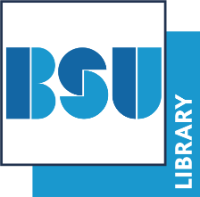Yang, H and Hugill, A (2013) 'The creative turn: new challenges for computing.' International Journal of Creative Computing, 1 (1). pp. 4-19.
Preview |
Text (pdf)
Hugill Yang - The creative turn.pdf - Published Version Download (230kB) | Preview |
Abstract
This is a call to action. The time is ripe for a creative turn in computing. This article sets out a vision of what Creative Computing is and what it might become. It distinguishes between Creative Computing and computational creativity, and then lays out a theoretical framework. It proposes that Creative Computing is mainly happening in software. It compares the process of software development with the process of artistic creation and looks at ways in which the two might productively overlap or merge. It considers the levels of abstraction required in both and interrogates both their semantics and underlying principles from a philosophical and practical point of view. Finally, it sets three types of new challenges for Creative Computing in terms of software.
| Item Type: | Article |
|---|---|
| Keywords: | creative; computing; challenges; abstraction; levels; composition; engineering; creativity; turn. |
| Divisions: | Bath School of Design |
| Date Deposited: | 18 Oct 2013 09:59 |
| Last Modified: | 05 Jan 2022 16:07 |
| References: | Abran, A. and Moore, J.W. (2004) Guide to the Software Engineering Body of Knowledge (SWEBOK), IEEE Computer Society Press, Los Alamitos, California. Boden, M.A. (1998) ‘Creativity and artificial intelligence’, Artificial Intelligence, August, Vol. 103, Nos. 1–2, pp.347–356. Boden, M.A. (2003) The Creative Mind: Myths and Mechanisms, 2nd ed., Routledge, London. Broy, M. (2006) The ‘Grand Challenge’ in Informatics: Engineering Software-Intensive Systems, IEEE Computer. Clarke, L.A., Osterweil, L.J., Perry, D. and Taylor, R. (1999) ‘Software engineering research: challenges, successes, and opportunities’, NFS Software Strategies Workshop, University of Southern California, August. Colburn, T. and Shute, G. (2007) ‘Abstraction in computer science’, Minds and Machines, Vol. 17, No. 2, pp.169–184, Springer. Dahlhaus, C. (1991) The Idea of Absolute Music, University of Chicago Press, Chicago. Eden, A.H. (2007) ‘Three paradigms of computer science’, Journal of Minds and Machines Archive, Vol. 17, No. 2, pp.135–167, Kluwer Academic Publishers Hingham, MA, USA. Finkelstein, A. (2011) 10 Open Challenges in Software Engineering: The Strachey Lectures in Computing Science, February, Computer Science Department, Oxford University. Hugill, A. (2012) The Digital Musician, Routledge, New York. Hugill, A., Yang, H., Raczinski, F. and Sawle, J. (2013) ‘The pataphysics of creativity: developing a tool for creative search’, Digital Creativity, Vol. 24, No. 3, (Accepted, to be published September 2013). Keane, M. (2007) Created in China: The Great New Leap Forward, Routledge, New York. Mayer, R.E. (1999) Fifty Years of Creativity Research: In Handbook of Creativity, edited by R.J. Sternberg, pp.449–460, Cambridge University Press, Cambridge. Parnas, D.L. (1976) ‘On the design and development of program families’, IEEE Transactions on Software Engineering, Vol. SE-2, No. 1, pp.1–9. Ritchie, G. (2007) ‘Some empirical criteria for attributing creativity to a computer program’, Minds and Machines, Vol. 17, No. 1, pp.67–99. Seaman, C.B. (1999) ‘Qualitative methods in empirical studies of software engineering’, IEEE Transaction on Software Engineering, Vol. 25, No. 4, pp.557–572. Selinger, C. (2004) ‘The creative engineer – what can you do to spark new ideas?’, IEEE Spectrum, August, pp.47–49. Somekh, B. and Lewin, C. (2006) Research Methods in the Social Science, Sage Publications, London. |
| ISSN: | 2043-8346 |
| URN: | https://researchspace.bathspa.ac.uk/id/eprint/1684 |
 |
Request a change to this item or report an issue |
 |
Update item (repository staff only) |

 Tools
Tools Tools
Tools